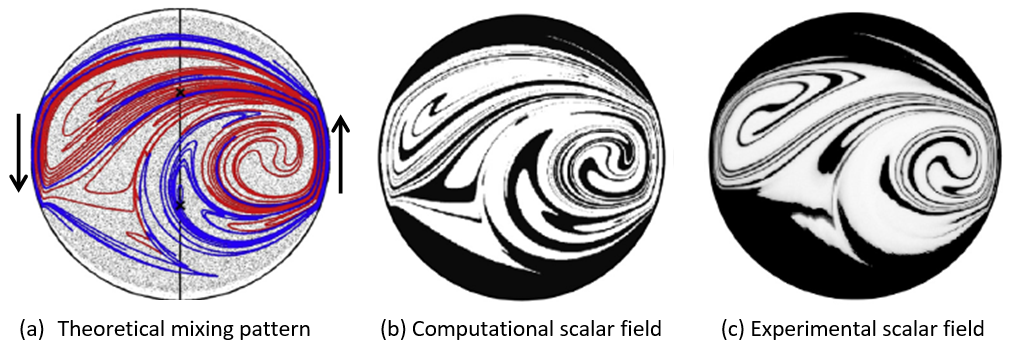Lagrangian Transport and chaotic advection: from fundamentals to applications
Abstract: Transport of scalar quantities (e.g. chemical species, nutrients, heat) in deterministic flows is key to a wide range of phenomena and processes in industry and Nature. This encompasses length scales ranging from microns to hundreds of kilometers, and includes systems as diverse as viscous flows in the processing industry, micro-fluidic flows in labs-on-a-chip and porous media, large-scale geophysical and environmental flows, physiological and biological flows and even continuum descriptions of granular flows. An essential contribution to the net transport of a scalar quantity is its advection by the fluid motion. The Lagrangian perspective (arguably) is the most natural way to investigate advection and leans on the fact that fluid trajectories are organized into coherent structures that geometrically determine the advective transport properties. This notion enables systematic investigation of fundamental transport phenomena and the application of scientific insights thus gained for purposes ranging from transport studies on environmental flows to the design and optimization of industrial processing equipment. The presentation highlights a number of fundamental Lagrangian transport phenomena and their application for such purposes. An important part of the discussion concerns demonstration of the physical relevance and meaningfulness of transport phenomena by experimental studies.
Figure Caption :
Mixing of passive scalars by “chaotic advection” in a 2D time-periodic flow driven by alternating activation of two opposite moving wall segments (arrows). Shown scalar fields in panels (b) and (c) correspond with the state of an initially circular patch after 2 forcing cycles and reveal a close agreement between the computational and experimental fields as well as consistency with the theoretical mixing pattern described by the red and blue “special” curves in panel (a).

